Mother Nature has an incredible color palette; vibrant pink lakes are among her most striking creations. These unusual bodies of water captivate visitors with surreal hues that often resemble cotton candy or rose-colored milkshakes.
The pink coloration comes from specific algae, bacteria, or high salt concentrations that thrive in these unique ecosystems. Here is a list of the 20 most stunning pink lakes worldwide, each with fascinating characteristics and beauty.
Lake Hillier, Australia
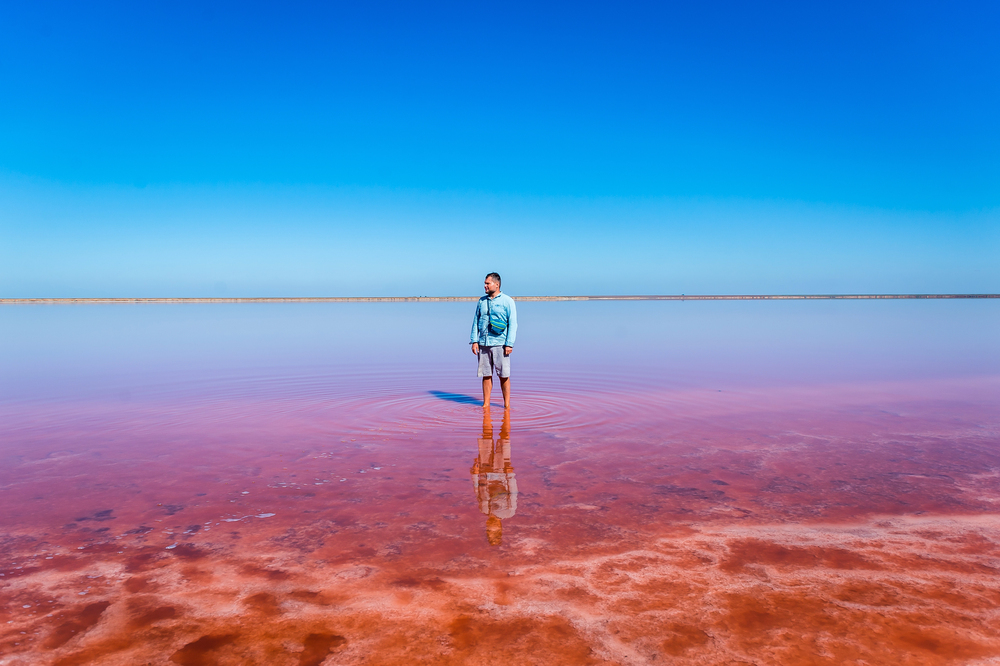
This bubblegum pink lake is just a few feet away from the deep blue Southern Ocean, creating a striking contrast that seems almost artificial. The small lake spans about 2,000 feet and maintains its vibrant pink color throughout the year, even when water is removed and placed in a container.
Scientists attribute the permanent pink color to the presence of Dunaliella salina microalgae and halobacteria.
Lake Retba, Senegal
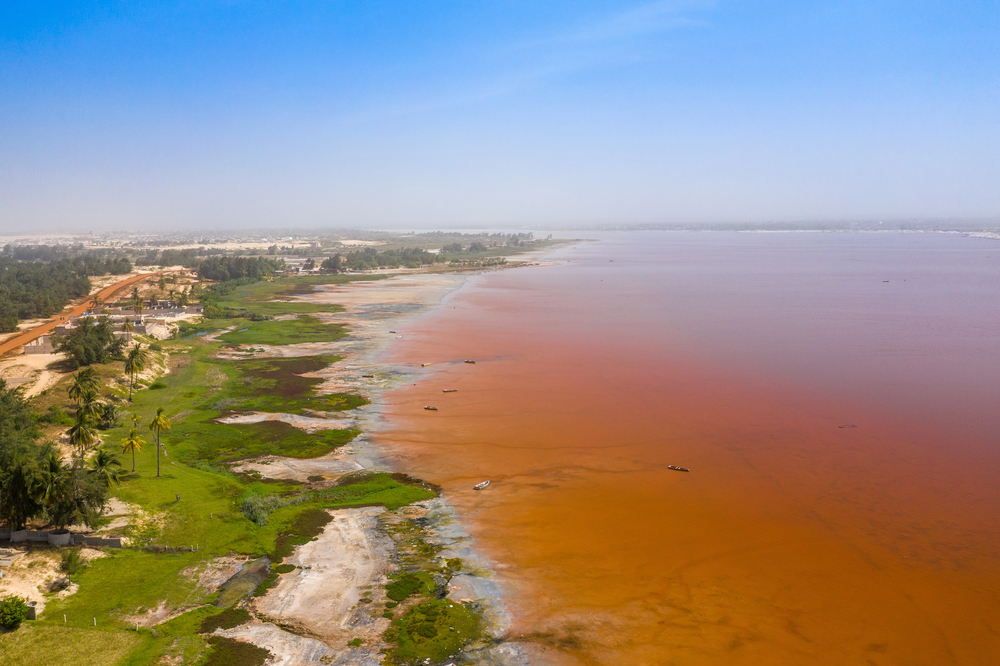
Known locally as ‘Lac Rose,’ this famous pink lake covers an area of about 1 square mile and is particularly vibrant during the dry season. Its rosy hue comes from Dunaliella salina algae, which produces a red pigment to absorb sunlight and create the lake’s distinctive color.
Salt workers harvest salt from the bottom of the lake, often covered in shea butter, to protect their skin from the extreme salinity comparable to the Dead Sea.
Like Travel Pug’s content? Follow us on MSN.
Hutt Lagoon, Australia
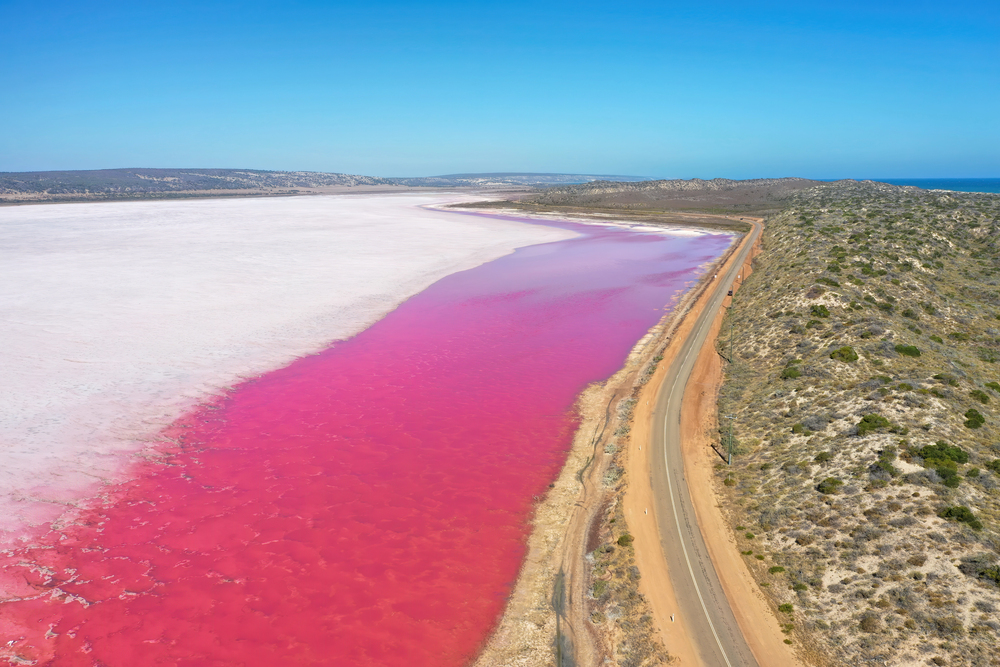
Stretching for about 14 miles along Western Australia’s coral coast, Hutt Lagoon displays a range of colors from bubblegum pink to lilac purple, depending on the time of day, season, and cloud coverage. The lagoon gets its color from beta-carotene-producing algae, which is harvested for use in food coloring and supplements.
Aerial views provide the most spectacular vantage point for appreciating this natural wonder.
Las Coloradas, Mexico

These stunning pink lakes in Mexico’s Yucatán Peninsula are ancient Mayan salt mines still used for salt production today. The commercial salt operation concentrates the naturally occurring salt, creating ideal conditions for red plankton and brine shrimp to thrive and produce vibrant pink.
The lakes are part of the Río Lagartos Biosphere Reserve, home to flamingos that sometimes feed in the waters, creating a perfect pink harmony.
Masazir Lake, Azerbaijan
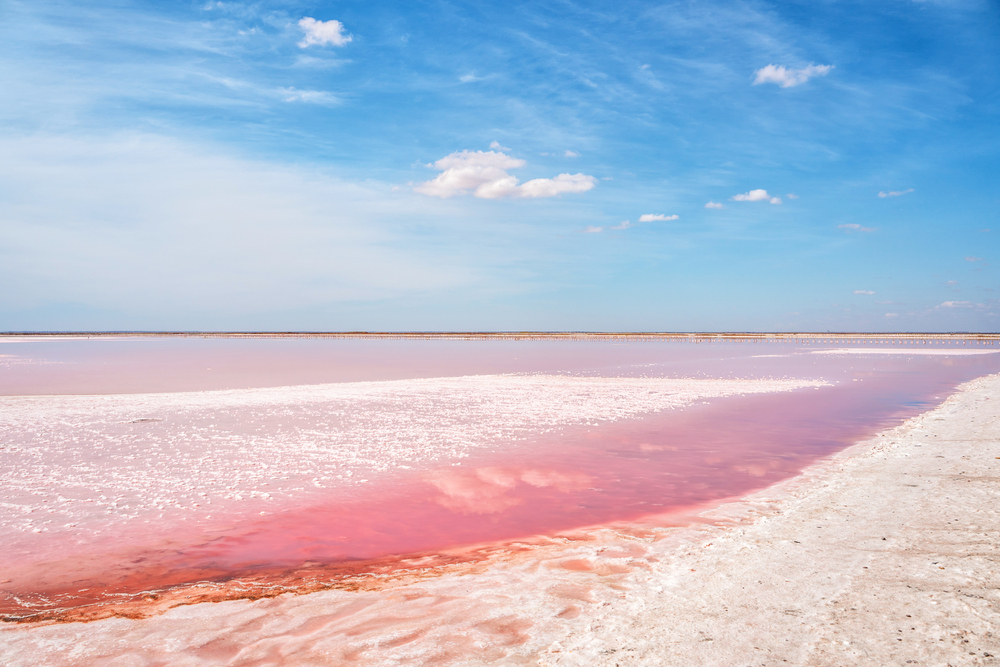
Located about 8 miles from Baku, Azerbaijan’s capital, this saline lake transforms into a beautiful pink color at certain times of the year. The lake is primarily known for its salt production, which has been ongoing since the 19th century.
The microorganisms that cause the pink coloration also contribute to the high-quality salt harvested here, making it an important economic resource for the region.
Like Travel Pug’s content? Follow us on MSN.
Lake Natron, Tanzania
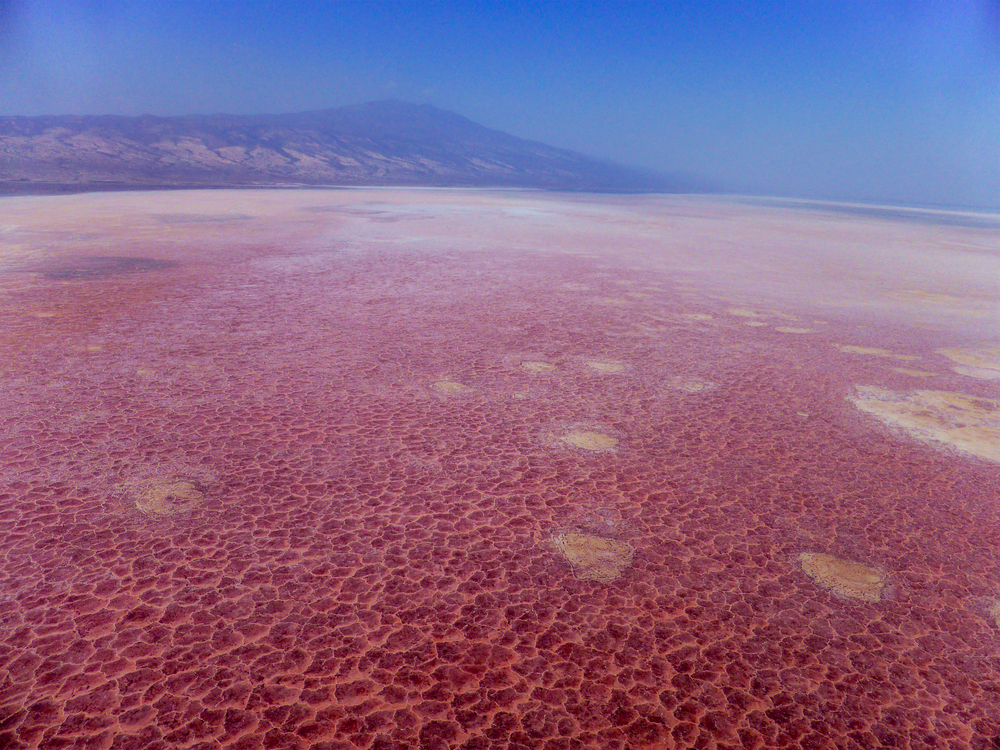
Perhaps the most extreme pink lake on our list is Lake Natron, a salt lake with waters reaching 120°F and pH levels as high as 10.5. The lake’s intense alkalinity comes from the sodium carbonate and other minerals flowing from the surrounding hills.
These harsh conditions allow only certain microorganisms to survive, including cyanobacteria that give the lake red and pink colors.
Dusty Rose Lake, Canada
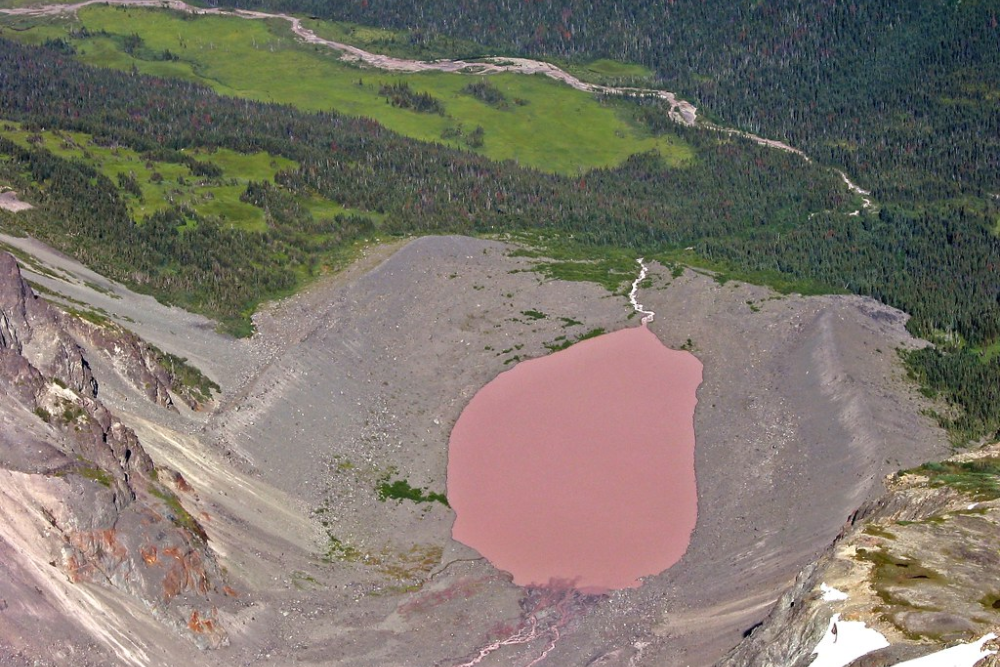
Nestled in Tweedsmuir Provincial Park in British Columbia, this lake gets its distinctive pink color from the surrounding rock rather than microorganisms. The lake is surrounded by red and pink-hued rocks that contain suspended particles, giving the water its rosy appearance.
Unlike other pink lakes, the coloration here is due to physical rather than biological factors, making it a unique entry on this list.
Salina de Torrevieja, Spain
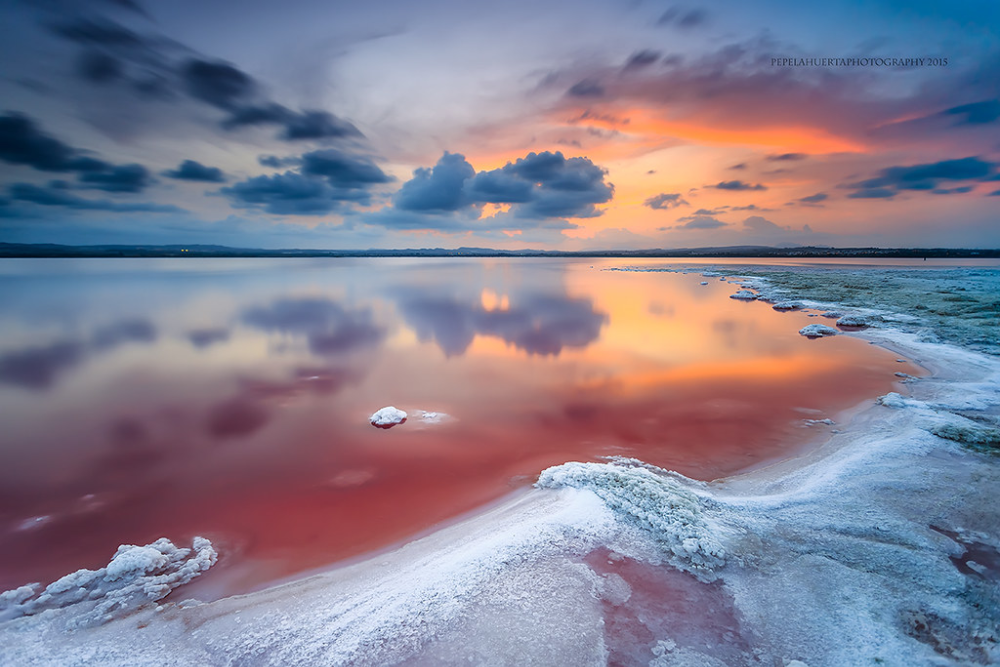
These salt lakes in the province of Alicante turn a beautiful shade of pink due to an algae called Halobacterium. The microorganism thrives in the lake’s extremely salty conditions and produces a red pigment that gives the water its distinctive color.
The lakes have been used for salt production since ancient times and are one of Europe’s most important salt works.
Like Travel Pug’s content? Follow us on MSN.
Koyashskoye Lake, Ukraine

Located on the Kerch Peninsula in Crimea, this shallow salt lake turns a vivid pink during the warmer months when water evaporates and salt concentrations increase. The lake is part of a natural reserve and is an important habitat for various bird species.
The pink color develops from the Dunaliella salina algae, which thrives in increasingly saline conditions during summer.
Pink Lake, Australia
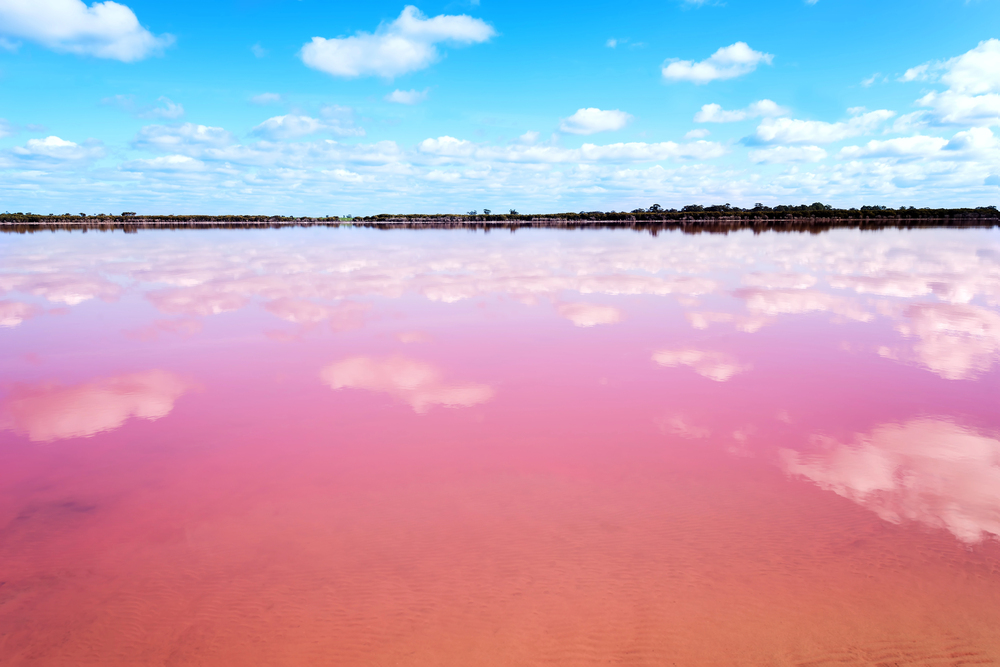
Despite its name, Western Australia’s Pink Lake (near Esperance) doesn’t always display its namesake color. The lake’s pink hue has diminished over recent years due to changes in water flow, increased freshwater, and reduced salt harvesting activities.
However, when conditions are right—with high salinity, the right temperature, and adequate sunlight—the Dunaliella salina algae can still turn this lake a pale pink color.
Lonar Lake, India
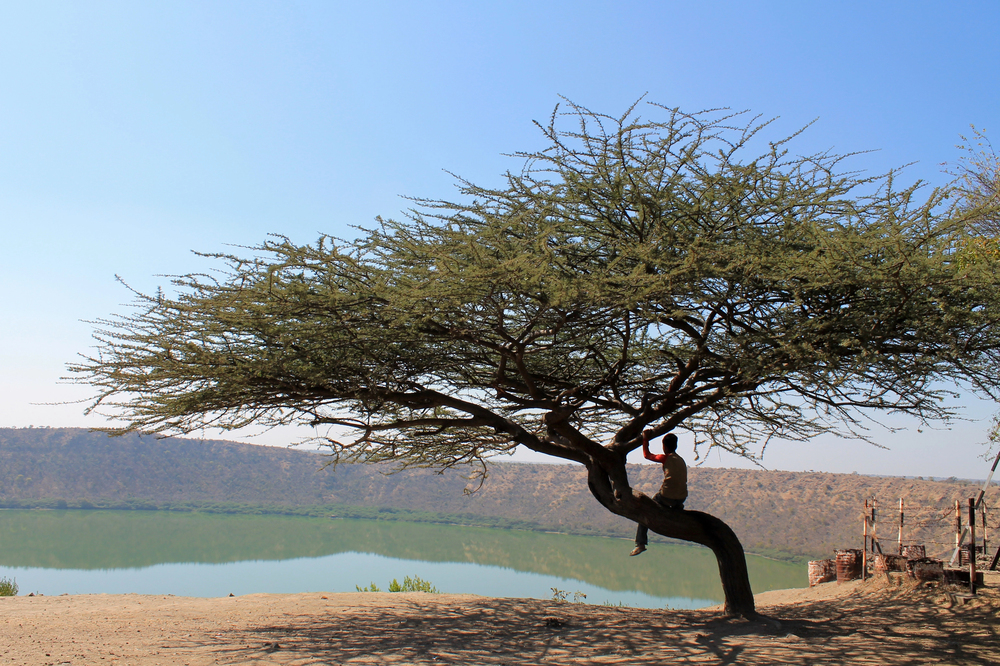
This unusual pink lake was created by a meteor impact about 50,000 years ago, forming the world’s largest basaltic impact crater. Depending on the season and algal populations, the lake’s color varies from green to pink.
The unique environment contains fresh and saltwater zones, creating a diverse ecosystem that scientists continue to study for its rare microbial life.
Like Travel Pug’s content? Follow us on MSN.
Quairading Pink Lake, Australia
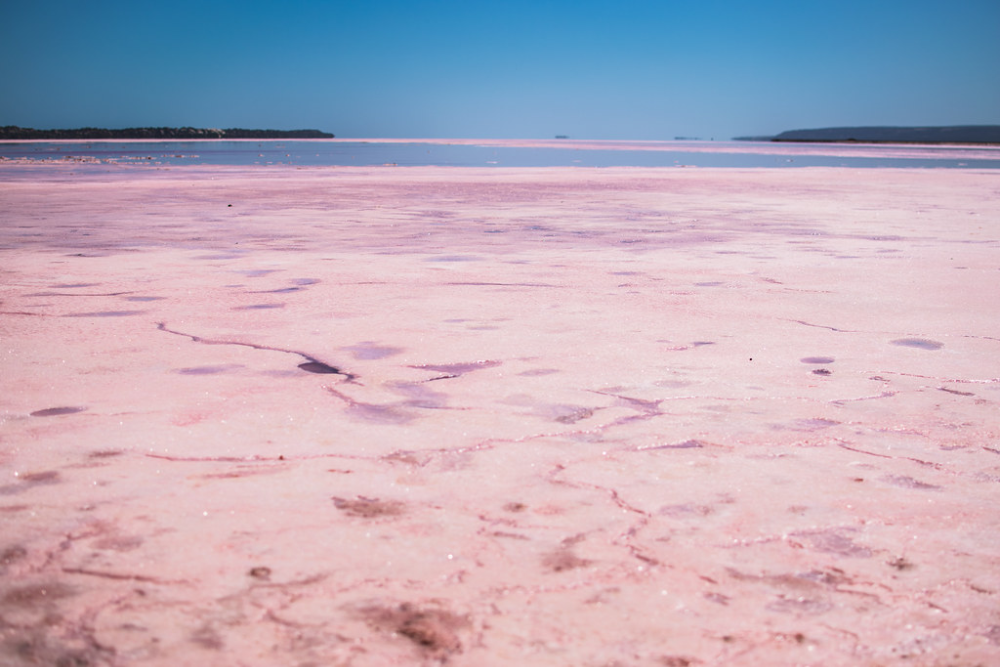
Western Australia hosts several pink lakes, and the one near Quairading features a unique characteristic—a narrow road divides the lake into two distinct sections, one pink and one blue. This remarkable visual phenomenon occurs because different microorganisms thrive in each section, creating a natural color divide that draws photographers and tourists worldwide.
Spencer Lake, Australia
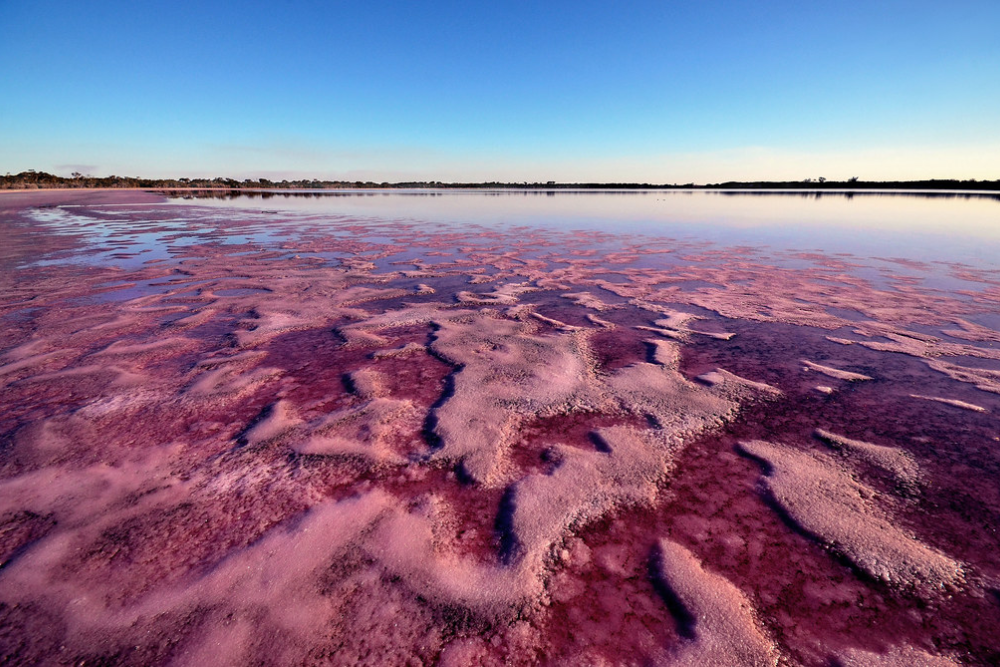
Near Esperance in Western Australia, Spencer Lake occasionally turns a striking pink color when conditions are right. The lake sits close to the bright white dunes and the deep blue Southern Ocean, creating a landscape that seems almost surreal.
The contrast between these three distinct colors creates a photographer’s dream and a breathtaking natural display.
Tuz Gölü, Turkey
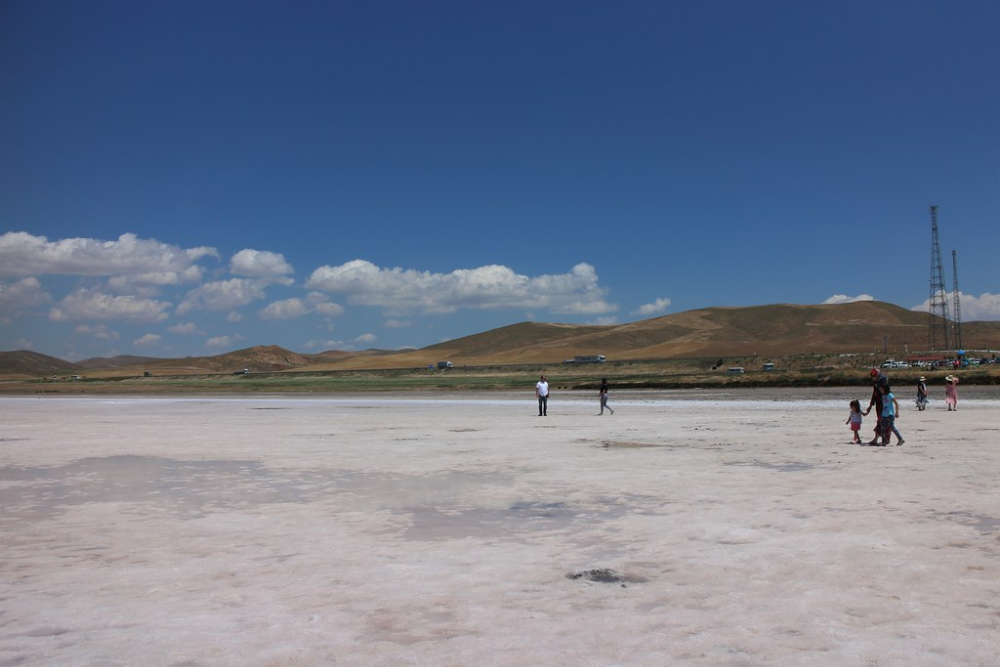
Turkey’s second-largest lake becomes a shallow pink pool during the dry summer months, when much of the water evaporates, leaving behind a salt crust. The lake’s name translates to ‘Salt Lake,’ which supplies approximately 60% of Turkey’s salt.
During summer, the lake bed becomes so solid that people can walk across it, and the remaining water often displays a rosy hue from halophilic bacteria.
Like Travel Pug’s content? Follow us on MSN.
Coorong Lagoon, Australia

The Coorong can turn pink under certain conditions. It is part of a larger wetland system at the mouth of the Murray River in South Australia.
This ecological area serves as a crucial habitat for many bird species, including migratory birds that travel from as far away as Siberia. The pink coloration appears when salt concentrations increase and the right microorganisms bloom.
Pekelmeer Flamingo Sanctuary, Bonaire
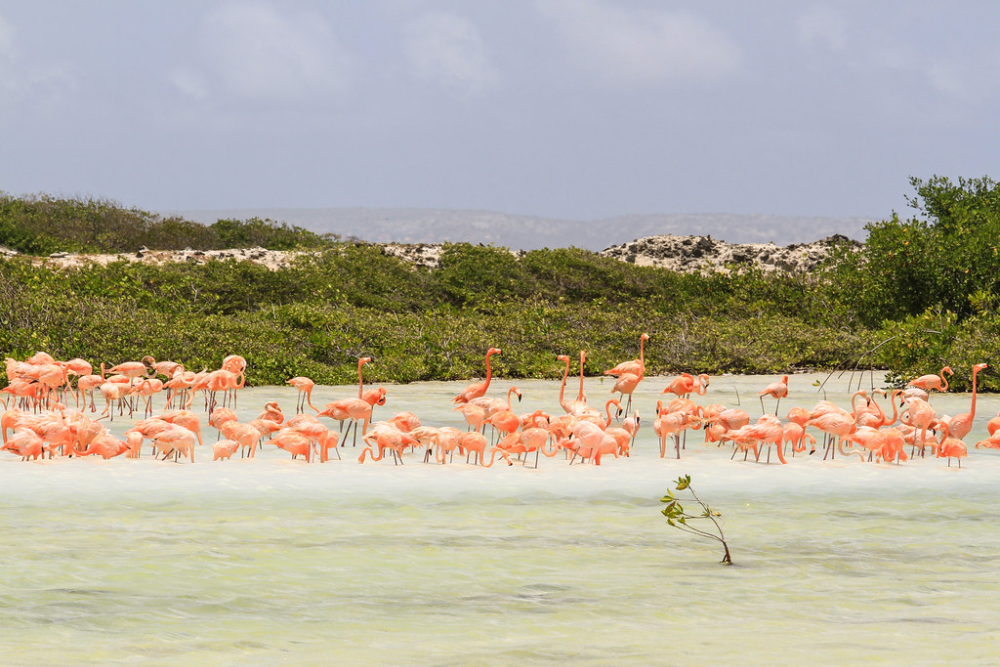
On the southern end of the Caribbean island of Bonaire, these salt lakes turn pink due to microorganisms and serve as an important nesting site for flamingos. The connection between pink lakes and flamingos is no coincidence—the birds often feed on the same microorganisms that color the water, contributing to their pink plumage.
The salt works here date back to the 1620s and remain operational today.
Laguna Colorada, Bolivia
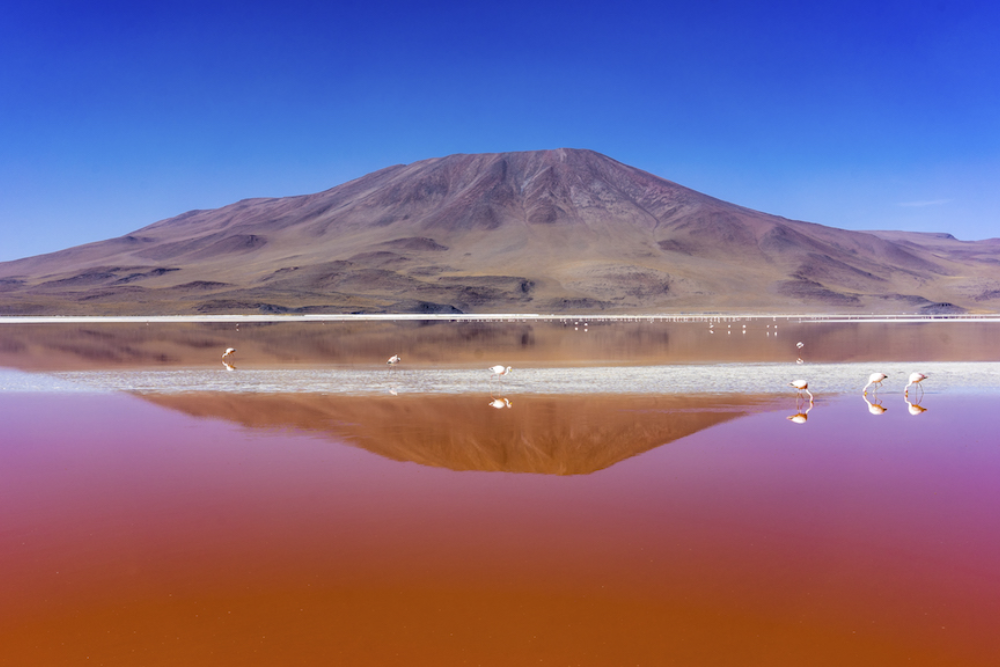
Located in Eduardo Avaroa Andean Fauna National Reserve near the Chilean border, this shallow salt lake gets its red-pink color from red sediments and algae pigmentation. White borax islands contrast dramatically with the colored water, creating striking visual patterns.
The lake is also famous for the large flocks of flamingos that feed and nest there, adding to the pink panorama.
Like Travel Pug’s content? Follow us on MSN.
Salins d’Aigues-Mortes, France

These ancient salt marshes in southern France have operated since the Middle Ages. Their distinctive pink color comes from an algae called Dunaliella salina, which produces beta-carotene in response to intense sunlight and high salt concentration.
These salt flats produce the famous ‘Fleur de Sel,’ or ‘Flower of Salt,’ a delicate salt variety prized by chefs worldwide.
Maharloo Lake, Iran

Located near Shiraz, this seasonal salt lake turns pink during the warmer months when water levels drop. The lake’s bed contains large amounts of potassium and other salts.
As the water evaporates, concentrations increase, and halophilic bacteria thrive, producing the signature pink color. The crystallized salt formations around the lake’s edges create beautiful patterns that enhance its otherworldly appearance.
Lake Cerrillos, Puerto Rico
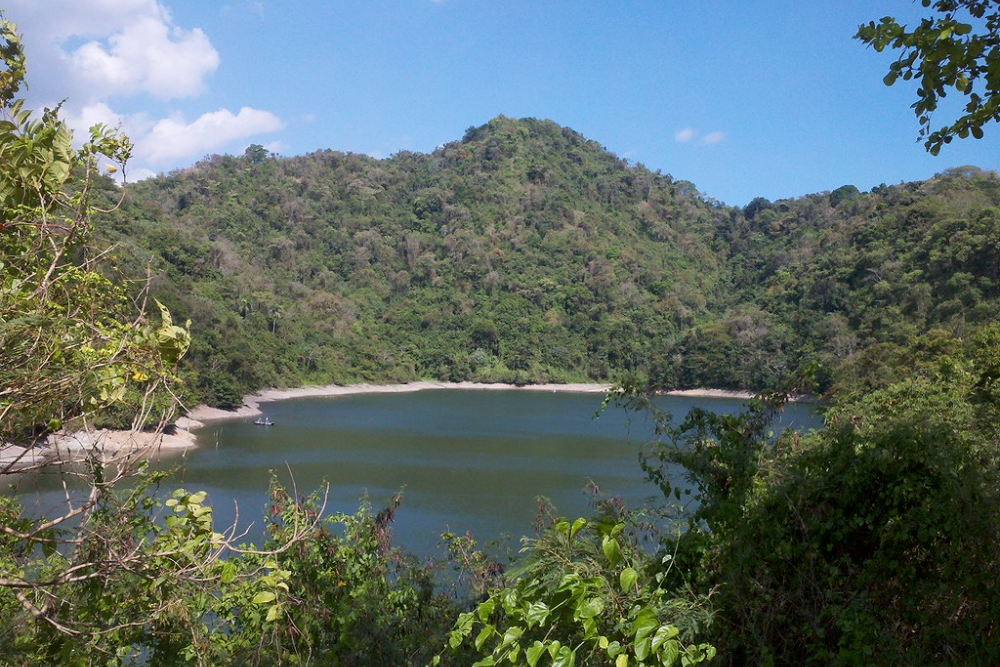
This artificial reservoir sometimes develops a pink hue due to specific algal blooms under certain conditions. While not as consistently pink as some other lakes on this list, when the coloration does occur, it creates a beautiful contrast with the surrounding lush green mountains.
The lake primarily serves as a water supply source but has become a point of interest when its waters turn pink.
Like Travel Pug’s content? Follow us on MSN.
The Enduring Appeal of Natural Wonders
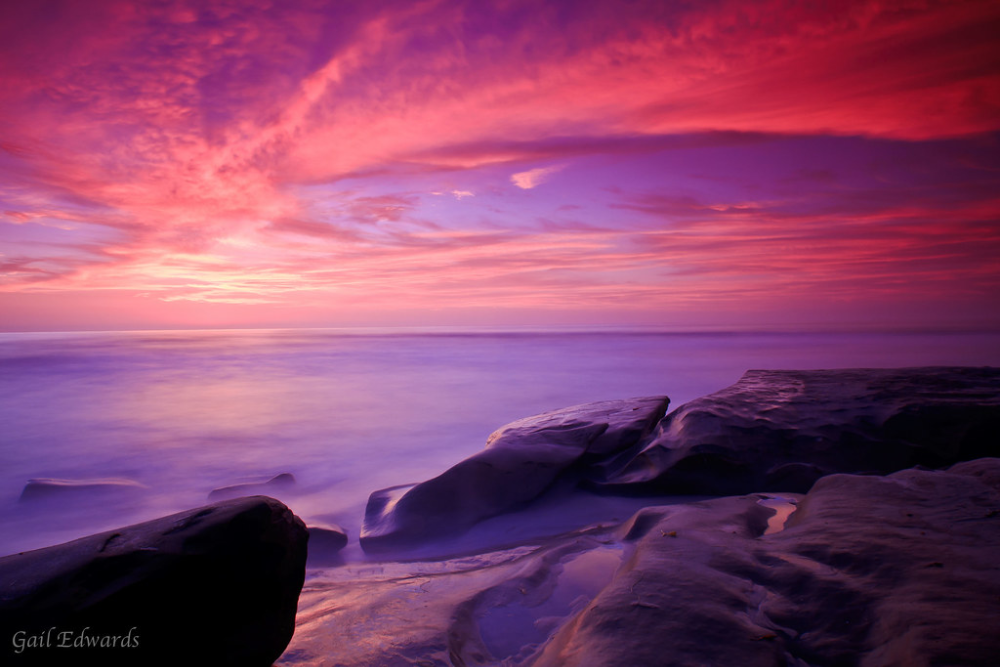
These remarkable pink lakes remind us of our planet’s diverse and sometimes surprising natural phenomena. From Australia’s numerous rose-colored waters to Bolivia’s high-altitude flamingo havens, these lakes represent unique ecosystems adapting to extreme conditions.
Their unusual beauty draws visitors worldwide, while their scientific importance continues to provide valuable research opportunities. The next time you plan a nature-focused adventure, consider seeking one of these remarkable pink waters.
They offer stunning photo opportunities and a chance to witness firsthand how life adapts and thrives in even the most challenging environments.
More from Travel Pug

- 20 Destinations That Were Once Thriving but Are Now Quietly Disappearing
- 15 Hidden Spots in Disney World’s Magic Kingdom Most Visitors Miss
- 20 Once-Popular Beach Towns That Are Now Ghostly Empty
- 20 Beautiful US Lakefront Towns Where You Can Live for Under $2000 a Month
- 20 Caribbean Islands That Are Safer Than People Think
Like Travel Pug’s content? Follow us on MSN.
